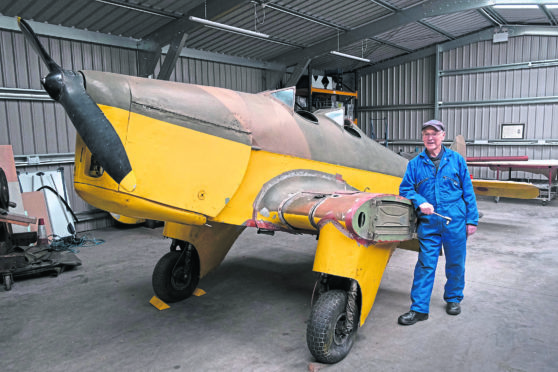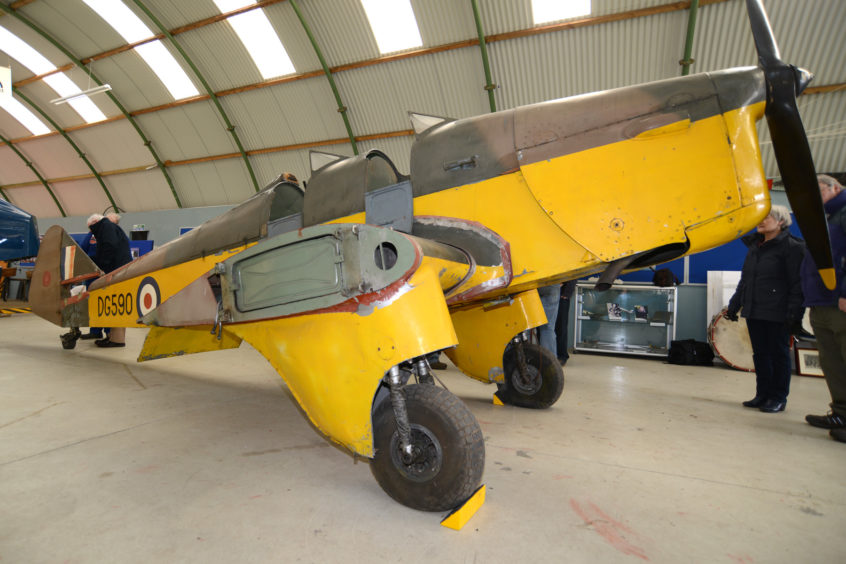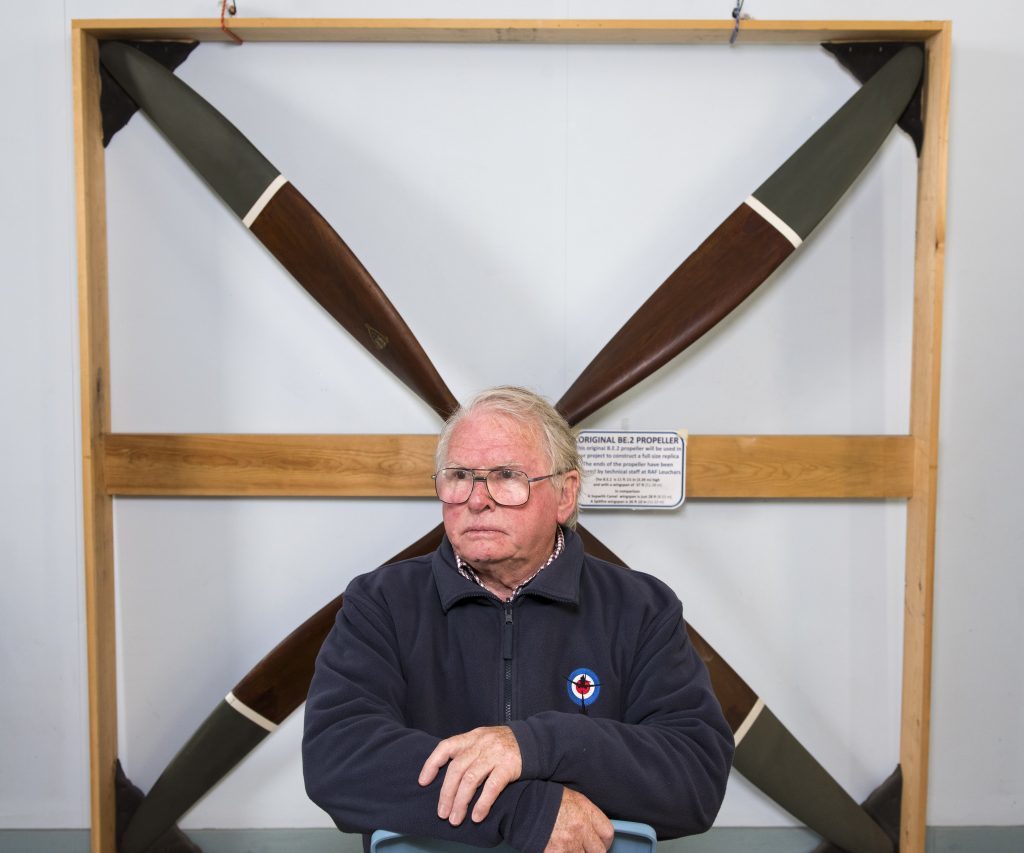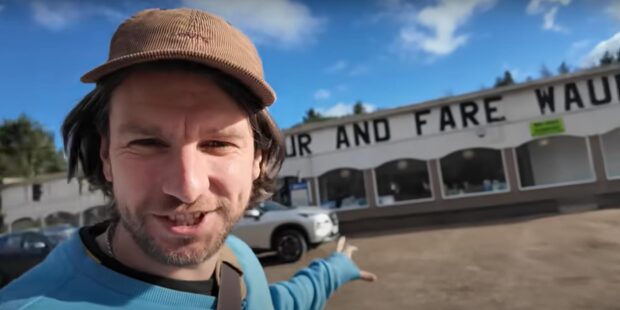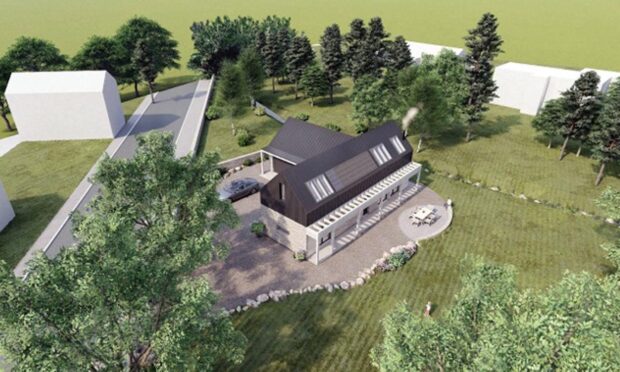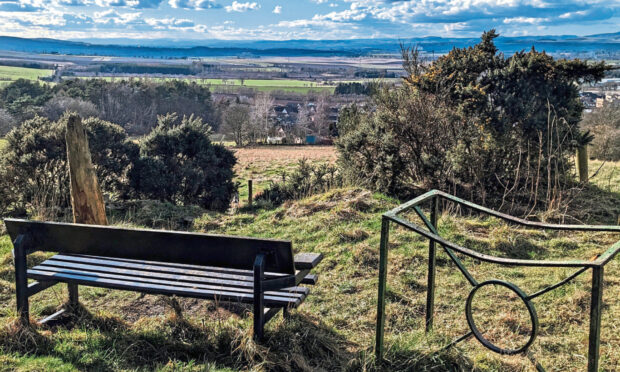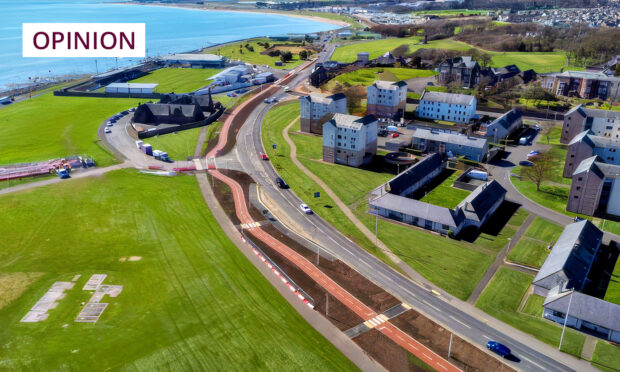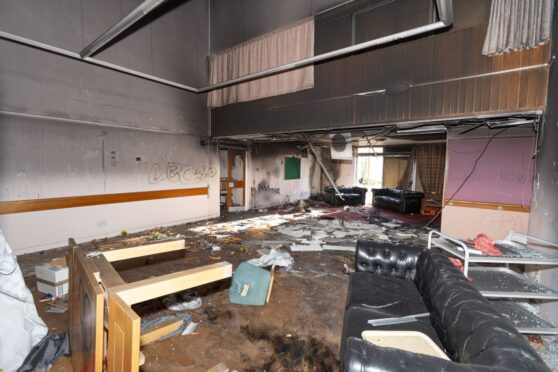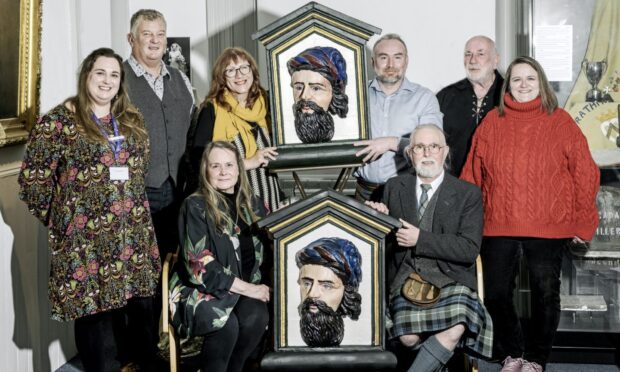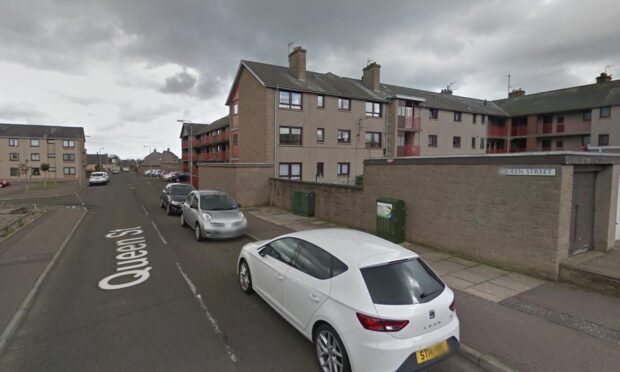Restoration work is finally under way in Montrose on a rare aircraft from the 1930s – one of only two in existence.
The Miles M.2H Hawk Major was a British two-seat light monoplane which was the fore-runner of the Miles Magister aircraft, used to train pilots at the Angus base during the Second World War.
The surviving plane, which was designed by Miles Aircraft Limited, has now been moved to the restoration workshop at Montrose Air Station and Heritage Centre.
Originally registered as G-ADMW, it was delivered to Heston in 1935 and went on to fly with the Portsmouth Aero Club in 1939 before being impressed into RAF service as DG590.
The aircraft was eventually declared surplus to requirements by the RAF Museum in London, before the Montrose Air Station Heritage Centre put in a bid in 2017.
Curator Dan Paton said the team had items in the collection marking a local link to the planes – and their importance to the war effort.
A logbook which belonged to Squadron Leader George Keith from Arbroath shows he trained on Miles Hawks at the Philips and Powis flying School in Reading in 1938.
“He went on fly over 130 missions with Bomber Command,” said Mr Paton.
“I think that is more than any other pilot.
“We have his medals including a DFC and a DFM and we will display the Hawk in pre-war civilian colours as his machine.”
Mr Paton said Montrose was one of the largest users of Miles aircraft in the RAF and the company even had its own repair shops at the Angus base.
“The company even designed an aircraft to be called the Miles Montrose,” he added.
“It never got off the drawing board.”
The close links between Montrose Air Station and Miles aircraft make the Hawk an important acquisition as part of efforts to tell the story of RAF Montrose during the second world war.
A Green Goddess fire engine which was presented to the heritage centre by the Home Office in 1997 has also returned home to Montrose.
Since April 2010 it has been in the care of the Strathmore Vintage Vehicle Club (SVVC) at Glamis after the air station ran out of space to keep it garaged indoors.
However, times changed with the SVVC running out of room to keep it, coinciding with the air museum acquiring hanger space.
